Asters Varieties And Hybrids - Pick Your Favorites
A Lot has been said about asters and their indelible dazzler. But the chief allure about these perennials apart from their hardiness is the amazing variety and hybrids bachelor for every gardener and landscaper. We're not just talking about asters with different colors. Aster varieties vary widely in terms of size, summit, weather tolerance, and flower time. Information technology'southward no wonder they are a staple of urban meadows.
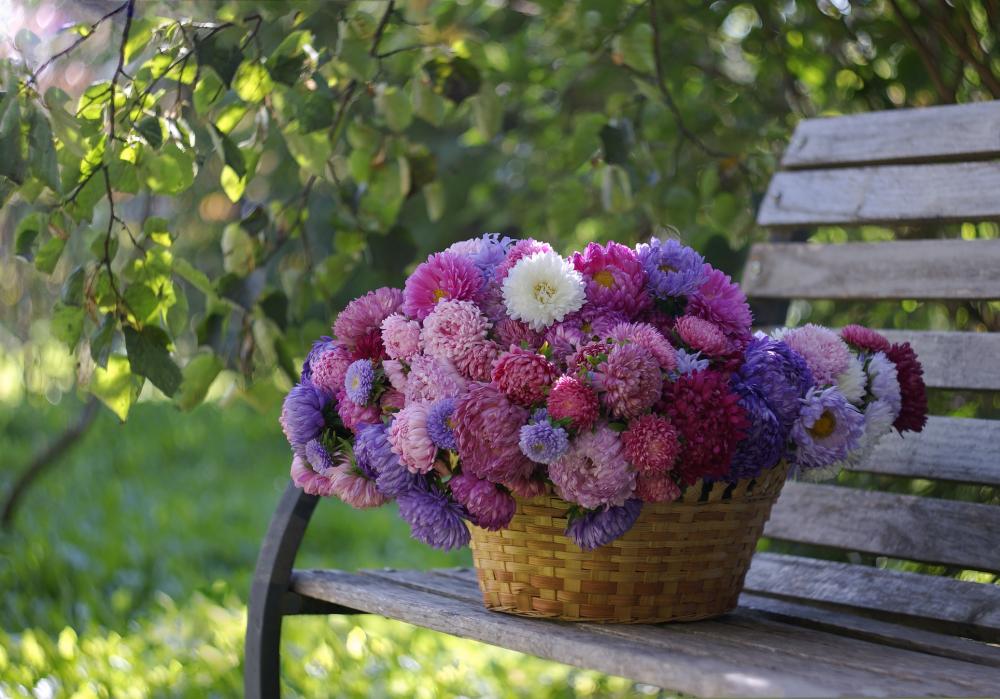
You can grow two aster cultivars and they'd wait like they were totally different plants. Zippo puts joy in the heart of a gardener or flower enthusiast than the give-and-take variety. And then if you're exploring the possibility of calculation asters to your garden and wondering where to beginning, this article is for you lot. Nosotros put together a listing of some of the most various asters. Equally you lot mix and match your asters, you'll go to appreciate these wonderful perennials and learn how to integrate them into your landscape designs.
Calico
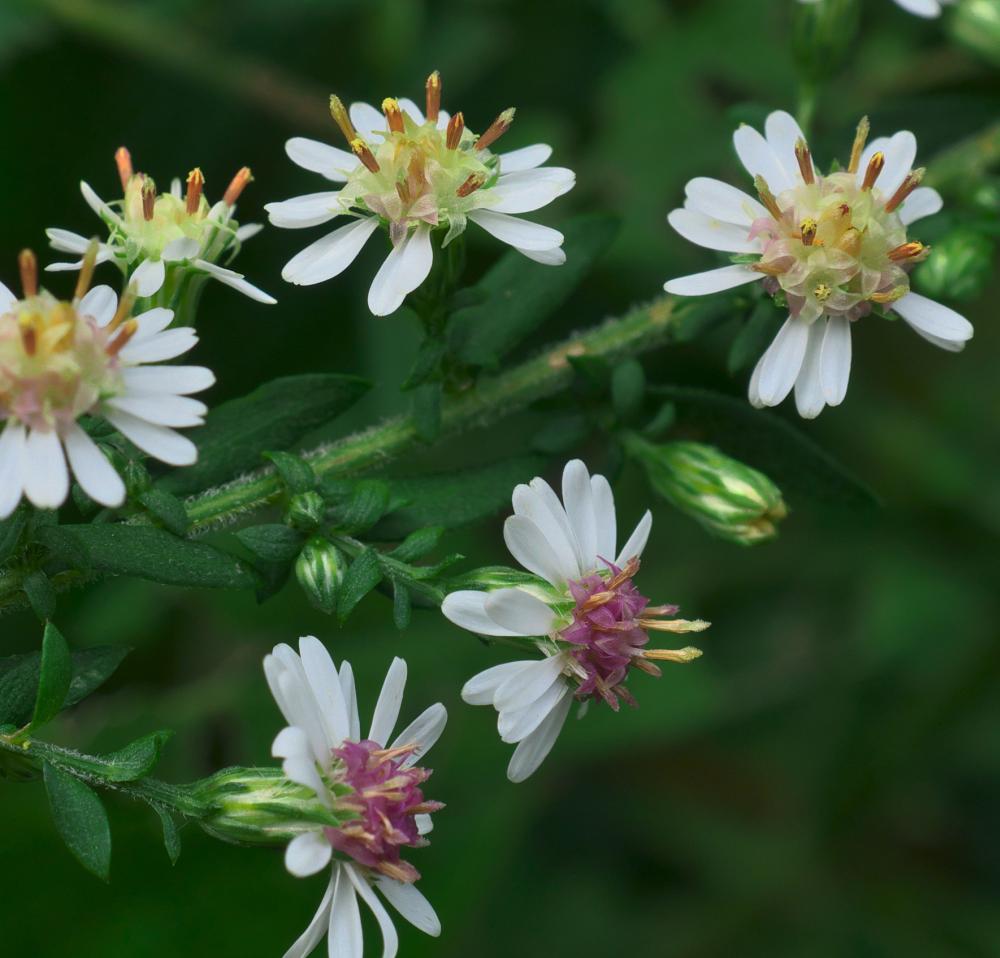
Nosotros start with calico. Its scientific proper name is Symphyotrichum lateriflorum only calico rolls over the tongue much easier. It likewise goes by many other names including calico aster, and white woodland aster. A native of Northward America, the calico is one of the giants of the Aster family family as it towers over four anxiety loftier and one foot wide.
The flowers of calico by comparison are rather small. The petals are white with a yellow or pinkish center. Each flower has about 7 petals in all giving the bloom head a whooping half-inch in diameter. But since flowers grow in clusters on top of the same stem, their dazzler is the result of the abundance of the flowers on each plant.
The leaves on the other paw are a different story. They're rough to the affect and offer little ornamental value particularly since they're thinly dispersed alongside the long and slender stems. Be careful when handling the leaves at the bottom of the stem, they are serrated and take sharp edges.
Plant calicos in full sun or fractional shade. They are hardy plants that thrive in different types of soil as long equally the soil is well-tuckered. Some organic materials in the soil will requite the plants a growth boost. Bloom time is from belatedly summertime until the first frost.
New England
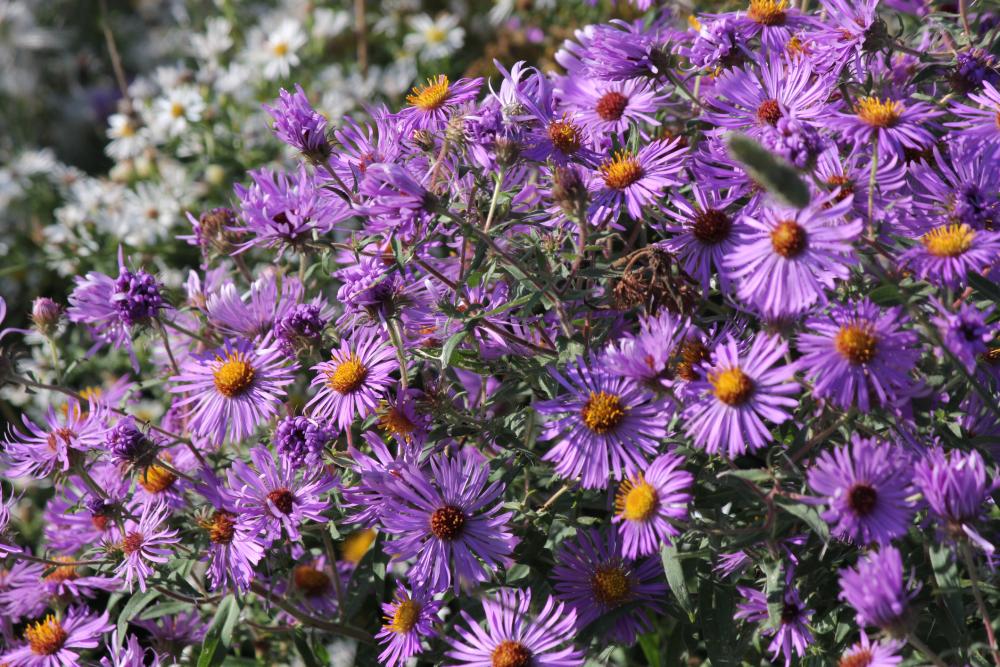
Another large plant past aster standards, New England (Symphyotrichum novae-angliae) is a native of Eastern Northward America. The perennial plant grows to about iv feet high and 3 anxiety across. Simply it's not its spread that catches the heart. It'due south the blooms.
New England has stunning regal flowers with each bloom containing every bit many as a hundred florets. In some cases, the flowers flower in white or pink shades, but bright purple is the dominant colour of this specific species.
It's not the easiest aster to grow mainly considering of its peculiar growing conditions. Dissimilar many other garden plants, this perennial prefers wet soil. It grows mainly along the banks of streams, ponds, and rivulets. And so if you want to grow information technology in your garden, you'll need to plant it virtually h2o sources or spots that remain wet all year circular.
The stems of the plant are usually thick and covered with tiny spikes. As for the leaves, they are long and slim and covered with hair. And so the plant cuts a handsome figure even without the blooms.
Besides its tolerance to wet soil, this aster grows equally well both under full lord's day or in partial shade. And then all in all, information technology'south a hardy perennial that loves to become its feet wet and rewards you with vivid imperial shades throughout the 2nd one-half of the summer.
Sky Blue
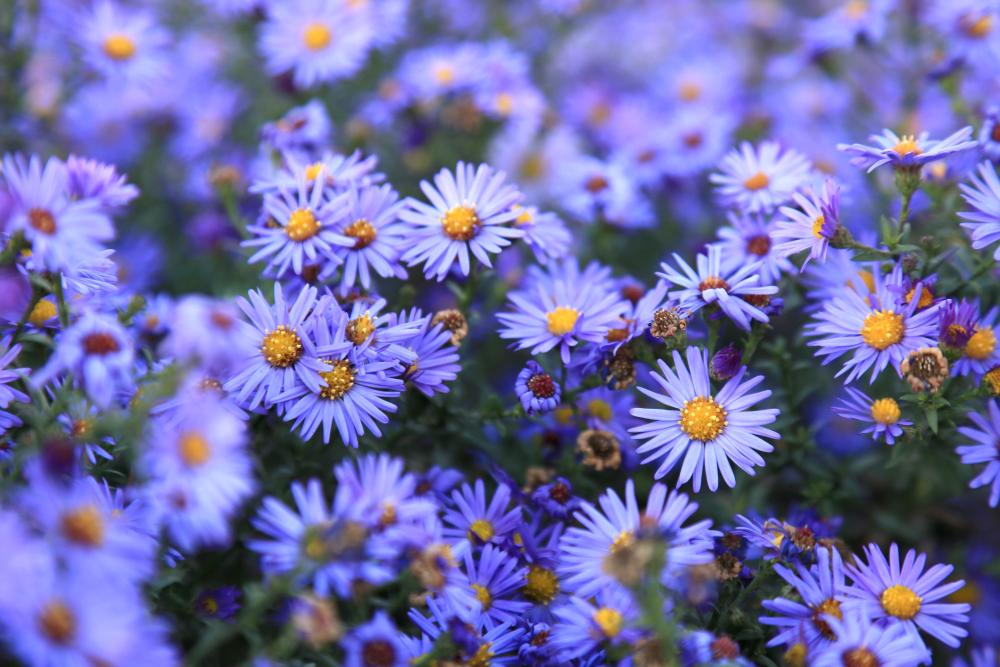
A slender aster with a hardy nature, Heaven Blueish (Symphyotrichum oolentangiense) grows tall rather than wide. While information technology can average 3 feet tall at most, the found but covers almost 18 inches of space. Some cultivars volition just grow to about 1 and a half feet tall so you tin use them for decorations in combination with the two alpine asters to a higher place.
Since it branches and with no spread to speak of, the tall aster needs staking. Near oft, the slender stems cannot carry the weight of the heavy blooms or the leaves then they bend toward the ground. A pale or support volition keep them upright.
The dense leafage is one of the striking qualities of the Sky Blue. The leaves are long and slender and taper off toward the acme. As for the flowers, they're something to ponder.
The pastel blue flowers are well-nigh one inch in width with a prominent yellow center. The petals are pulled dorsum as is the case with other asters to reveal the deejay in the heart. The combination of blue, yellow, and dark-green brand information technology platonic for sunny landscapes. Peculiarly since the clusters of flowers are non as dense every bit with other cultivars which gives each individual flower its place in the limelight.
Tatarian

Delicate is the first word that comes to listen when y'all await at a blooming Tatarian (Aster tataricus). Despite that, this perennial herbaceous plant has a place in Korean cuisine. That'due south right. It's an edible plant that apparently goes well with soy sauce and kimchi.
Tatarian is also an essential herb in Chinese traditional medicine, so that'south something to consider if you plan on growing it in your garden.
Another matter to consider is space. This is a big member of the family that grows to 6 feet with ease and covers three feet wide. Despite that and for all the clusters of flowers a stem carries, the plant doesn't require staking. The stems are woody and hard even if they appear bright green.
The leaves are sparse and also bright light-green. They take a slender shape and jagged edges. But they're soft enough you won't have to clothing gloves to cut the clusters of flowers.
And what a delight, the flowers are. They are lavender with an orange eye measuring about one inch in diameter. As with the Blue Sky, the storied blooms are not dense, and you lot can admire each blossom individually. If y'all want to beginning your asters gardening with just one constitute, this is definitely the 1.
Blueish Wood

Blue Wood (Symphyotrichum cordifolium) gets its name from its pastel bluish flowers and blood-red-brown stems which look like wood. The highly ornamental perennial throws in some light green leaves for good measure. And although the flowers abound in clusters atop the woody stems, each manages to stand up out and need some of your time.
Just information technology's not all fun and games with this dancing aster. The stems and despite their name, are not hard enough to back up the flowers and then they need staking. In addition, the found tends to become gangling which requires regular pruning just to go along information technology in shape.
The leaves are ordinarily covered with hair and have toothy edges so precaution is recommended when pruning this plant. The lower leaves tend to be large and heart-shaped while the ones at the top are small and long. This gives the flowers more room to show all their splendor.
As with other asters, it thrives under the total sun likewise as partial shade. The soil needs to be loose and well-drained. When using stakes, make sure they're non taller than the Blueish Wood. Keep the stake about one foot shorter than the plant and use transparent ties to bind information technology gently and loosely to the stems.
Smooth
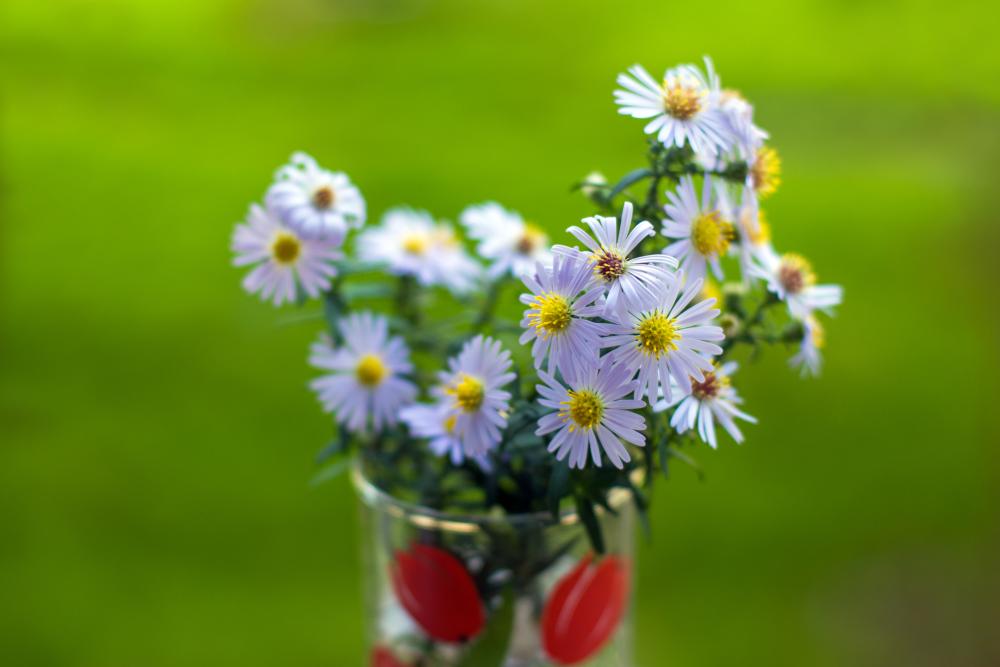
Smooth aster (Symphyotrichum laeve) is actually a misnomer. When you consider the ovate leaves with serrated edges, there'southward aught smooth nigh this aster. Maybe that's why information technology'south more unremarkably known as glaucous aster. As for the smooth-leaved aster alias, it refers to the absence of pilus on the leaves.
This is a medium-size aster that averages about 2 feet alpine. Sometimes in the right conditions, information technology might hit the 4-pes mark, just that'due south rare.
This is a institute that stands tall and holds its ain without the demand for support. The tough stems are blueish and carry ovate leaves in alternate patterns. The leaves get-go large and broad at the lesser and grow smaller equally you move to the top of the plant.
As for the flowers, they grow in clusters and bloom in different colors ranging from royal to blue and white. The heart of the flower is invariably yellowish. The flowers are a lilliputian larger than your average aster bloom and measure about one inch and a quarter of an inch in diameter.
Polish aster has a loftier tolerance for drought and prefers total sun to fully flourish. The soil needs to be loose and well-tuckered for the roots of the institute to establish.
Aromatic

Another aster with a duplicitous proper noun. Aromatic aster (Symphyotrichum oblongifolium) is a perennial that averages between ane to 3 feet high and the same in width. Despite the name, the flowers of the institute take no fragrance. We're guessing they were running out of names in Kansas where the found originates so they gave it this tongue-in-cheek proper name.
To be off-white, the bright green foliage has more entreatment than the lack-luster flowers. The flowers have slender petals and are usually stake purple. The center is as e'er yellow.
But information technology's the leaves that get your attention. They are long and slender similar lances and covered with tiny hairs. And besides its bushy appearance, the bottom greenish leaves turn brown in the autumn leaving the top looking delightfully green as usual.
There's one redeeming property well-nigh the flowers though. Every bit they age and before they fade in the autumn, the center turns red.
Plant the Effluvious aster in all types of soil as long equally information technology's well-tuckered. Both full sun and partial shade are also tolerated.
Frost
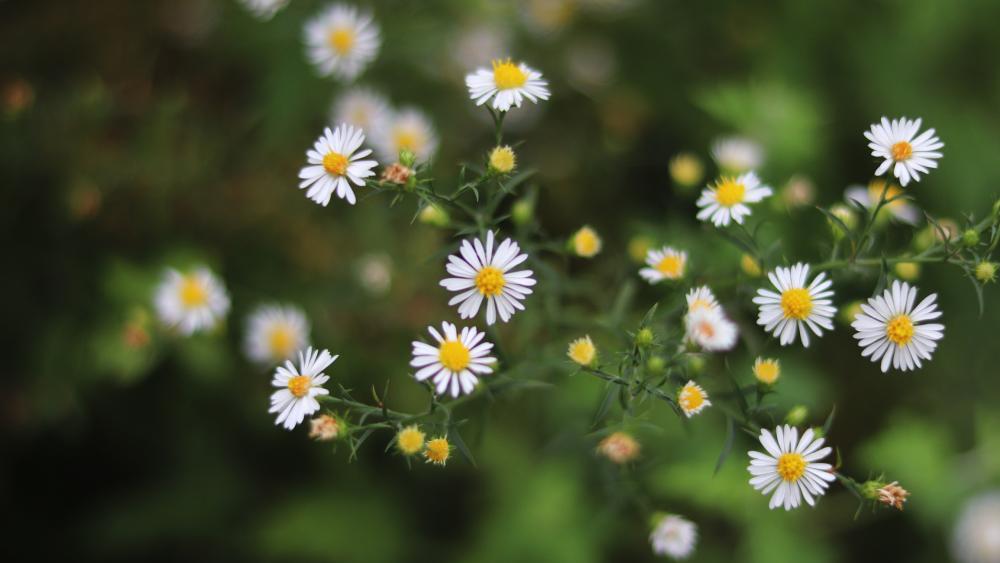
Frost aster (Symphyotrichum pilosum) is a cute plant with lively white flowers and xanthous centers. The mature constitute averages about 2 feet, although you tin become it to grow to iv feet in good and rich soil.
With its branching stems, the plant might need staking. That despite the fact that the stems turn woody as they age. As for the leaves, they accept the customary lance shape and accept plenty of tiny hairs. Don't allow the soil go dry for long every bit the leaves at the base of the plant are rather sensitive. When the Frost aster is stressed, the leaves fall no thing the season.
The flowers are pure white and the xanthous centers tend to turn red every bit well in the autumn. They are less than i inch in diameter and stay in bloom until September.
Source: https://www.diys.com/asters-varieties/
0 Response to "Asters Varieties And Hybrids - Pick Your Favorites"
Postar um comentário